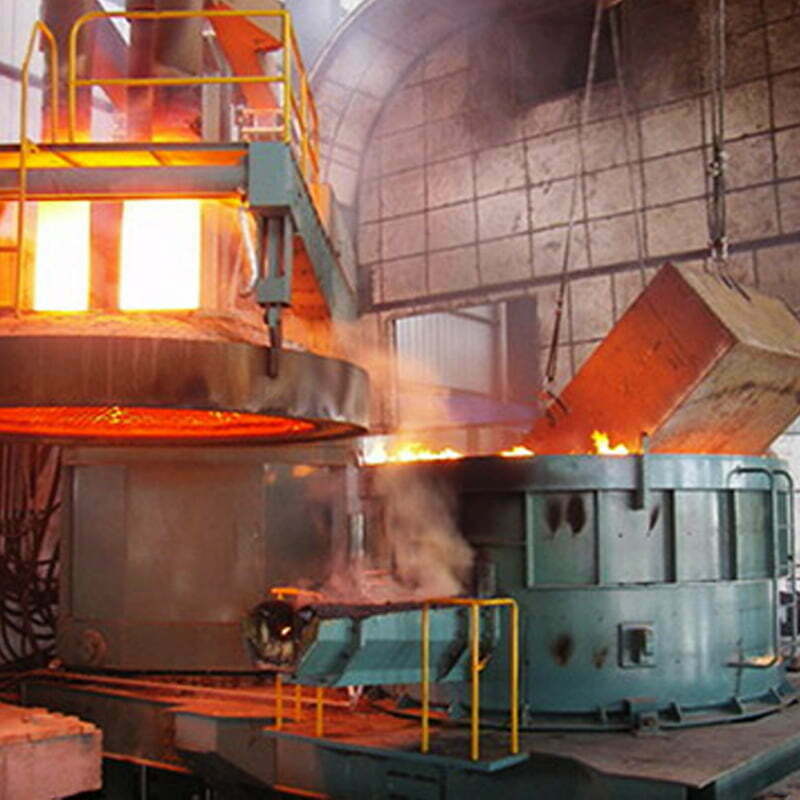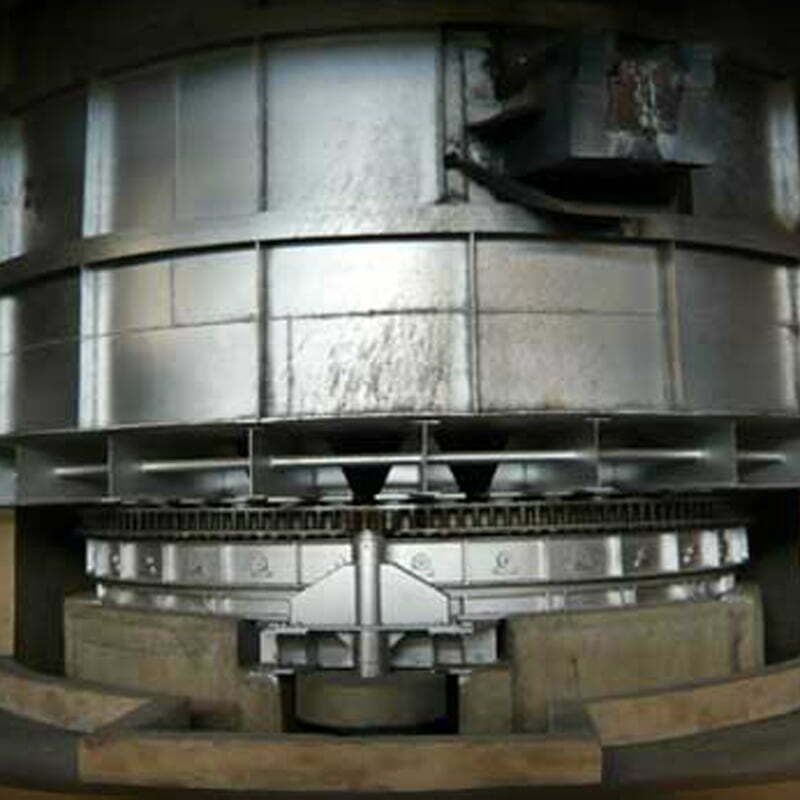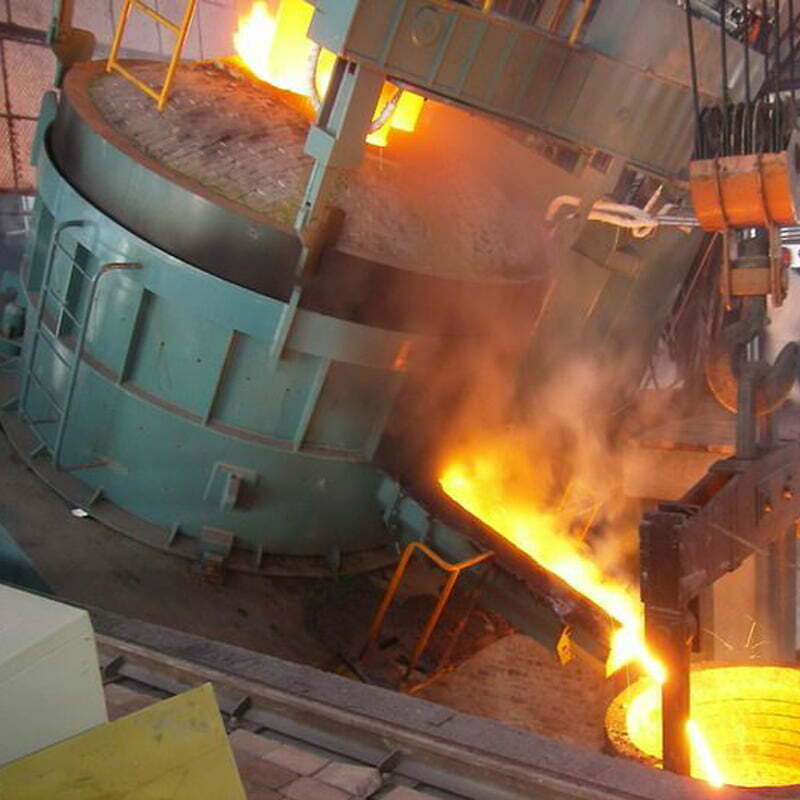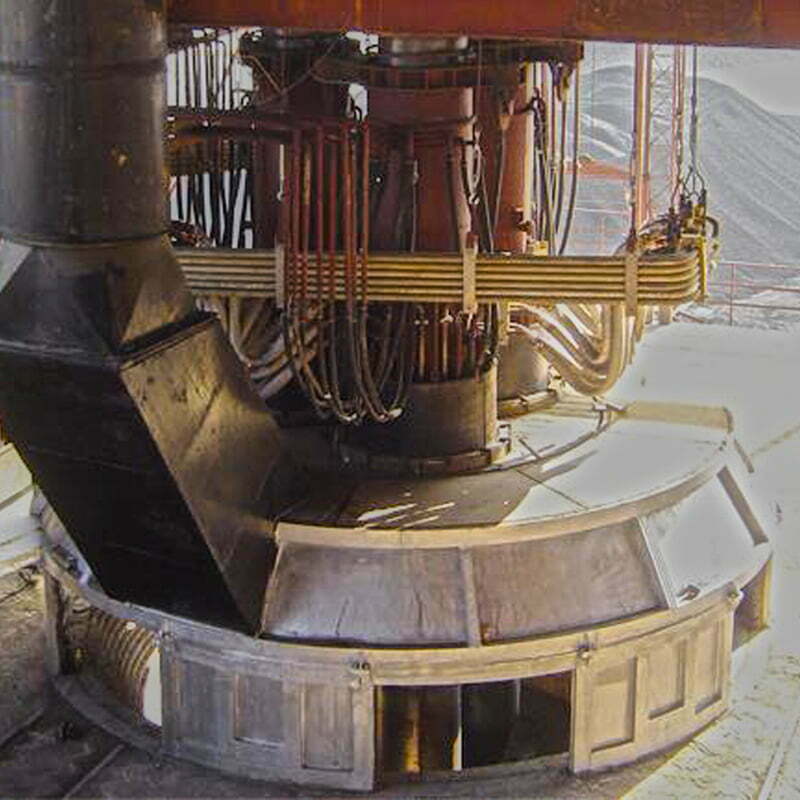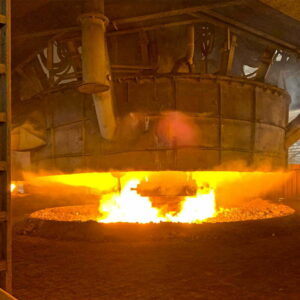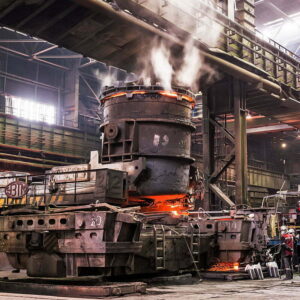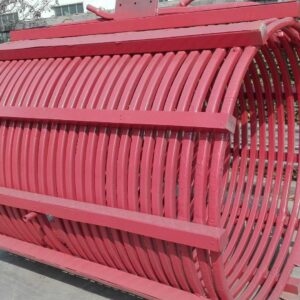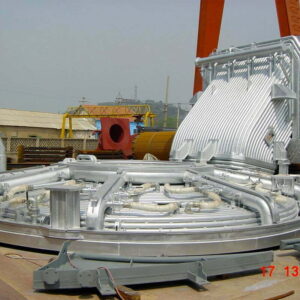Description
Furnace body of submerged arc furnace (SAF).
According to the electrode arrangement in the submerged arc furnace (SAF), the furnace type of the submerged arc furnace has the electrode triangular arrangement type, which includes a circular furnace and a triangular furnace;
Electrode linear arrangement type, it includes rectangular furnace and oval furnace.
The shape of the furnace body depends on the arrangement of the electrodes. Most of the three electrodes in a row and the six electrodes in three phases are rectangular or elliptical furnace bodies;
A round furnace body is commonly used, which has a compact structure, high rigidity and is easy to manufacture.
The temperature of the reaction zone of the molten pool of the reduction furnace is as high as 2000-2200 ℃, and it is in a strong electric field. The refractory material needs to have high refractoriness and good physical and chemical indicators.
According to the electrode arrangement in the submerged arc furnace, the furnace type of the submerged arc furnace has the electrode triangular arrangement type, which includes a circular furnace and a triangular furnace;
The shape of the furnace body depends on the arrangement of the electrodes. Most of the three electrodes in a row and the six electrodes in three phases are rectangular or elliptical furnace bodies;
A round furnace body is commonly used, which has a compact structure, high rigidity and is easy to manufacture.
The temperature of the reaction zone of the molten pool of the reduction furnace is as high as 2000-2200 ℃, and it is in a strong electric field. The refractory material needs to have high refractoriness and good physical and chemical indicators.
Commonly used refractory materials are clay bricks, carbon bricks, magnesia bricks, etc.
There is a gap of about 90-140mm between the furnace shell and the refractory brick, and the clay particles and asbestos board are filled as an elastic layer to partially absorb the expansion of the refractory brick and reduce the heat dissipation of the furnace lining.
The furnace shell is welded or riveted by 15-25mm thick steel plate and vertical and horizontal stiffening plates.
The side walls are equipped with tap holes, 1-2 for the stationary electric furnace and 5-6 for the rotary electric furnace, the latter is beneficial for the furnace body to rotate to any position for tapping.
The bottom plate of the furnace is usually a horizontal plate, which is floated on the I-beam bent frame placed on the concrete foundation, and a good air passage can be formed through the I-beam bent frame to cool the furnace bottom.
The rotary furnace body is conducive to loosening the charge during the smelting process to increase the permeability, expand the reaction area and prolong the life of the furnace lining, and is mostly used in electric furnaces that produce high silicon alloys.
Parameters of Furnace Body
Main Technical Parameters of 25500kVA Silicon Manganese Furnace
Furnace Technical Parameters
|
No
|
Item
|
Parameter
|
|
1
|
Furnace Shell Diameter
|
Φ10500 mm
|
|
2
|
Furnace Shell Height
|
5630 mm
|
|
3
|
Furnace Wall Thickness
|
1050 mm
|
|
4
|
Furnace Chamber Diameter
|
Φ8400 mm
|
|
5
|
Depth of Furnace Chamber
|
3500 mm
|
|
6
|
Thickness of Furnace Bottom Brickwork
|
2130 mm
|
|
7
|
Electrode Diameter
|
Φ1400 mm
|
|
8
|
Diameter of Electrode Distribution Circle
|
Φ3500100 mm
|
|
9
|
Electrode Working Stroke
|
1400 mm
|
|
10
|
Electrode Lifting Speed
|
0.5 m/min
|
|
11
|
Number of Iron Outlet
|
2 unite
|
|
12
|
Copper Wattage Per Electrode
|
8 root
|
|
13
|
Cooling Water Consumption
|
300 t/h
|
|
14
|
Number of Production Days / Year
|
330 d/a
|
|
15
|
Daily Production
|
120 t/d
|
|
16
|
Annual Output
|
39787 t/a
|
Transformer Technical Parameters
Single-phase Transformer: 8500kV
Model: HKSSPZ-8500kVA/35kV
Rated Capacity (KVA) : 25500, allow 30% overload
Cooling Method: OFWF, strong oil water cooling,
The inlet water temperature is not greater than 30, and the outlet water temperature is not greater than 40.
Characteristics of Submerged Arc Furnace Body
Compared with the rectangular furnace, the characteristics of the circular furnace are:
1) The three electrodes are arranged in a positive triangle, and the three-phase load (working resistance) and the three-phase power are relatively balanced;
2) The high temperature area is concentrated, and the furnace core area (between the three electrodes) may reach a higher temperature;
3) The heat dissipation surface of the furnace wall corresponding to the unit section of the molten pool is small, which can not only reduce the heat loss, but also allow a longer power outage time;
4) The furnace body can be rotated mechanically to make the materials in the furnace go forward.
Compared with the circular furnace, the characteristics of the rectangular furnace are:
1) The structure of the furnace body is relatively simple, and the configuration of auxiliary electromechanical equipment (transformer, feeding and discharging machinery) is relatively convenient;
2) Six electrodes can be configured to expand the smelting area;
3) The electrode has few restrictions on the movement of materials, and it is easier to remove the gas generated in the smelting process;
4) The temperature difference between each part of the molten pool is small, and local overheating is not easy to occur.
Rectangular furnaces are used for matte smelting, calcium carbide (calcium carbide) production, ferromanganese production, etc. Most ferroalloy furnaces are circular furnaces, which are also used in the non-ferrous smelting industry, such as nickel oxide ore smelting and cobalt slag smelting.
The submerged arc furnace is a melting furnace, and the main size of the furnace body is the size of the molten pool, that is, its length and width (or diameter) and depth. The submerged arc furnace is basically heated by electricity. In theory, the molten pool should be an effective range for electrothermal conversion, so the size of the molten pool should be a multiple of the electrode diameter.
The rectangular furnace usually has a furnace top and is a closed furnace. The main dimensions of its furnace body are the length, width and depth of the molten pool, in addition to the electrode center distance and the furnace height.
SAF Type & Service
HANI Metallurgy is a SAF China manufacturer with rich experience in production and export.
We can design and manufacture furnaces with the appropriate power according to the specific needs of our customers.
Types of Furnaces
SAF is mainly used for reduction of raw materials such as smelting ores, carbonaceous reducing agents and solvents.
It mainly produces ferrosilicon, ferromanganese, ferrochrome, ferrotungsten, silicomanganese alloy and other ferroalloys.
The following models are in high demand by users:
16500KVA industrial silicon furnace, 12500KVA silicon-aluminum furnace, 16500KVA silicomanganese furnace, 16500KVA ferro-nickel furnace, 33000KVA ferrosilicon furnace, 33000KVA ferrosilicon furnace, 25500KVA ferrochrome furnace, 8000KVA industrial silicon furnace
and other customized furnaces according to customer requirements.
Services
HANI Metallurgy can provide “turnkey” services for technical solutions, production line design, plant layout, equipment manufacturing, installation and commissioning of relevant projects.
We can also design, manufacture, modify and upgrade your existing production equipment according to your requirements.
We will send our engineers to your factory to install and commission the machines and provide reliable after-sales service.
Our machines are easy to operate and maintain.
Production capacity can be adjusted according to customer requirements.
We supply complete plants as well as individual plants such as furnace shells, furnace covers, furnace liners, short grids, water cooling systems, fume extraction systems, dust removal systems, electrode shells, electrode press and lift systems, loading and unloading systems, grippers, burn-throughs, hydraulic systems, transformers for mineral-heating furnaces and various auxiliary equipment and accessories.

